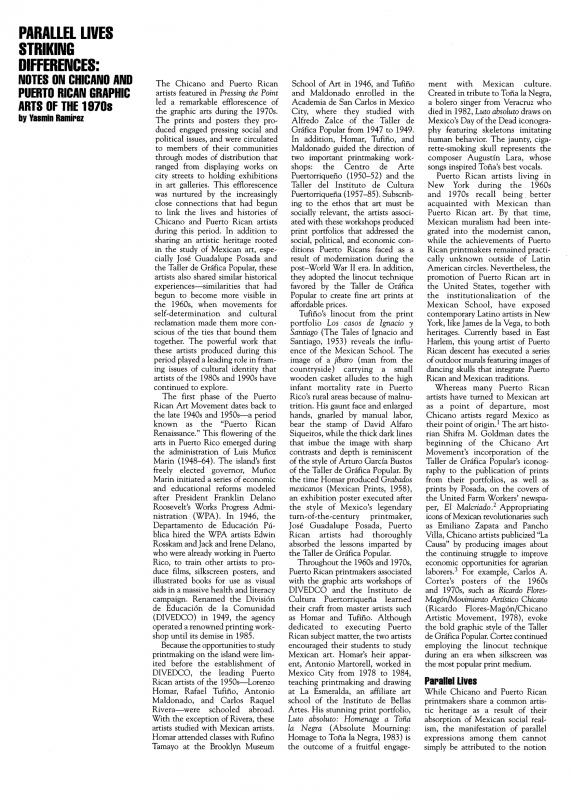In this essay, Yasmin Ramírez argues that among the parallel conditions of Chicanos and Puerto Ricans in the United States was a solidarity that took shape during the era of World War II, when floods of new arrivals—coming from Mexico, under the Bracero Program, and from Puerto Rico under Operation Bootstrap—were hired as farm and factory workers, constituting the two largest Spanish-speaking communities in the nation. The following generation of Chicanos and Puerto Ricans generated activists who struggled to institute bilingual education, and to incorporate their histories in school curricula. During the 1970s, Chicano and Puerto Rican visual artists were positioned as key players in a larger avant-garde cultural movement. The Revista Chicano-Riqueña exemplified the building of a pan-ethnic coalition that linked scholars from both origins, and gave way to the more inclusive concept of latinidad [Latin-ness] that came to fruition in the 1980s and 1990s. Among the striking differences between both groups analysed by Ramírez is the variation in the artists’s engagement with heritage, and the projections of national identity from each community. The Chicano movement draws from the visual vocabulary of Mexican artists, like Diego Rivera and the muralist tradition, which although integrated with modernist techniques, mostly derived from Indigenism. Although Puerto Rican visual artists have circulated the Taíno symbols from archeological finds as an analogy to their resilience under 500 years of domination, the unequal treatment that the African heritage received in Puerto Rican culture made such a Nativism a problematic rallying point. Puerto Ricans are not mestizos [intermingled] in the manner that Chicanos would define the term; their ethnic makeup being threefold between Taino, Spanish, and African. Moreover, there is no general phenotype able to represent this tripartite racial composition.

